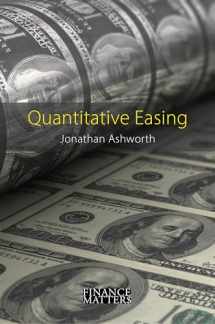
Quantitative Easing: The Great Central Bank Experiment (Finance Matters)
Book details
Summary
Description
About the Author
Jonathan Ashworth is an independent economist. He has worked as an economist at Morgan Stanley and Barclays Wealth and his work has been widely cited in the media including The Economist, The Financial Times and The Wall Street Journal. He has also worked as an economist in the productivity and structural reform team at HM Treasury, where he did work on the famous "Five Tests" for whether Britain should join the euro.
Before the Great Financial Crisis of 2008–09, significant reductions in official interest rates typically proved sufficient to generate sustainable economic recoveries from downturns. However, with economies and financial markets in freefall during the crisis despite a cut in interest rates to effectively zero, policymakers in some advanced economies launched a major new tool called quantitative easing (QE). This involved central banks purchasing huge amounts of financial assets.
This book offers a thorough and perspicacious analysis of QE, which has become a recovery method of last resort. Whilst it was successful in averting another Great Depression and stimulating growth, it remains controversial and continues to promote widespread debate in economics, financial, and political-economy circles. This book is essential reading for anyone wishing to understand central banking in the national economy.


We would LOVE it if you could help us and other readers by reviewing the book
Book review



